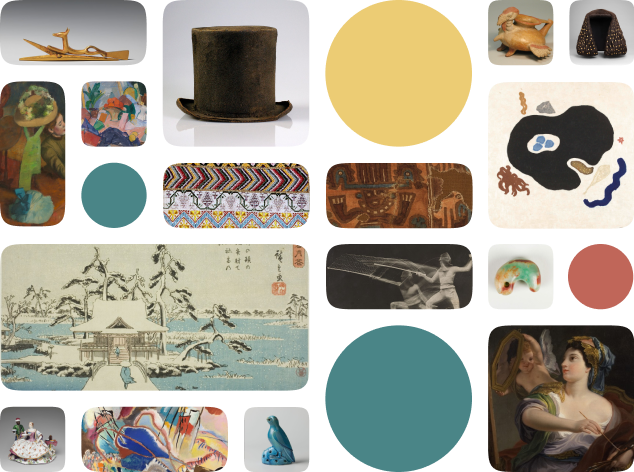Figure
Creator Name
Cultural Context
Date
Source
About the work
Art historians have determined this highly abstracted, Anatolian figure represents a woman. This finding is based on similarly shaped fertility icons from this region. The Anatolian Peninsula is located between Western Asia and Europe and has been inhabited by Indo-European peoples throughout history. The Anatolian peoples were among the first groups to migrate to this area around the 3rd millennium BCE.
During this period, Mediterranean figures ranged in style from anthropomorphic and zoomorphic to abstract. All of these styles, including abstract figures, were produced with markings indicative of sex or status. Yet this figure is highly abstracted with no individualized marks. Its U-shaped bottom mirrors the wide hips of female figurines. Other readings suggest the figures are sexless representations of juveniles, since similar abstract figures have been found at youth burial sites.
During this period, Mediterranean figures ranged in style from anthropomorphic and zoomorphic to abstract. All of these styles, including abstract figures, were produced with markings indicative of sex or status. Yet this figure is highly abstracted with no individualized marks. Its U-shaped bottom mirrors the wide hips of female figurines. Other readings suggest the figures are sexless representations of juveniles, since similar abstract figures have been found at youth burial sites.
Brooklyn Museum Object Description
The majority of ancient Near Eastern female figures emphasize their fertility. Although the three terracotta (baked clay) figures here come from very different times and places, all are nude and two have overlarge, patterned pubic areas. Their faces are rudimentary, with little or no indication of a mouth. The copper figure, though very schematically modeled, suggests a real woman with pulled-back hair and a bulging belly, wearing a knee-length skirt and carrying an infant on her back. In contrast, the marble image, with its circular head, long neck, and U-shaped body, is reduced almost to abstraction.
Work details
"--" = no data available
Title
Creator
Worktype
Cultural Context
Material
Dimensions
Technique
--
Language
--
Date
Provenance
Style Period
--
Rights
Inscription
--
Location
Source
Subjects
Topic
Curationist Metadata Contributors
All Works in Curationist’s archives can be reproduced and used freely. How to attribute this Work:
Unknown, Anatolian Abstract Figure, 3rd century BCE. Brooklyn Museum. Based on similarly shaped fertility icons from this region, art historians have determined this highly abstracted, Anatolian figure is of a woman. Creative Commons Attribution.
Help us improve this content!
Let our archivists know if you have something to add.
Save this work.
Start an account to add this work to your personal curated collection.
